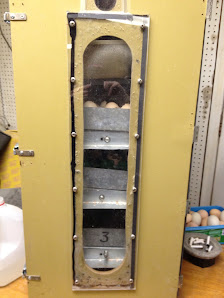The teachers are everywhere. What is wanted is a learner.
~ Wendell Berry
When I first met Ches in 2010, I was an avid gardener, but I did not yet envision myself as a future farmer’s wife. In addition to the fun but more standard milestones of courtship, such as getting to know Ches—and later his wonderful family—our dating can also be marked by my growing familiarity with a farmer’s lexicon. I now know the difference between a sal, a swine and a hog and between a lamb, a sheep and a ewe. I use words like brewer hens and fence post driver. I’ve been introduced to a world of vocabulary and knowledge that was once common knowledge and has now become arcane in a world where many of us may go a month without eating anything that was produced within an hour of where it was consumed.
I feel a great sense of responsibility to learn everything I can before acquiring animals that will depend upon us for their sustenance. In addition to devouring books from Joel Salatin, Michael Pollen, and Willie Allen and every food documentary Netflix could offer, one of the most valuable things we have done is attend farm tours with local producers.
Not to sound overly Portlandia a ‘la “
Is it Local?” (A must watch if you haven’t seen it!), but it is amazing how open local farms often are about allowing customers to learn about and even visit their farms. As farmer’s markets have regained popularity and I found myself buying more and more of my food from local producers, I have been struck by how many farmers are quick to invite customers to visit their farm. Many, many local farmers have blogs about their farm. While a blog does serve an underlying marketing purpose, as I read them they so clearly go beyond simple marketing and speak instead to a passion for sustainable agriculture and its potential to heal our soil and address food shortages in places where there is not enough to go around and nutrition deficits in places where there is too much.
 |
| The three tenors of Osage Creamery |
My first farm tour was at
Osage Creamery in Pataskala, Ohio. I make handmade soaps and was delighted to track down this local farm where Ches purchased me a ¼ goat share, allowing me to buy raw goat milk whenever I wished. We went in the spring and were greeted by a league of young goats (hence the adorable goat photos!).
 |
| A mama goat at Osage Creamery |
Later, we were invited to
Up the Lane Grass Fed Beef Farm (check out their wonderful and resource-rich blog at
upthelanefarm.wordpress.com), suppliers of the best beef I’ve ever had and is owned by a wonderfully friendly couple. Their website has an open invitation to visitors:
Consider visiting the farm. We have a standing Open House most Sundays. You are welcome to come out and walk the pastures a little, meet the herd.
 |
| At Up the Lane on a perfectly picturesque day |
We did indeed visit the herd. By this time having our own farm was beginning to feel more plausible, so we discussed everything from grass varieties and types of fencing to the farming lifestyle. It has always amazed me how much rotational grazing can heal depleted soil, so a highlight for me was visiting a paddock that had been in their rotation for several seasons and feeling how buoyant and healthy the soil was compared to patches that had not been worked yet.
At Iron Fish Farms we hope to begin selling at our first farmers market this spring. I hope we will have opportunities to pay forward the generosity of these farmers who have shared their time and knowledge. I personally believe that demand for sustainably raised, local foods will continue to grow. I look forward to the opportunity to extend an invitation to come on out and meet the herd at Iron Fish Farms!






















